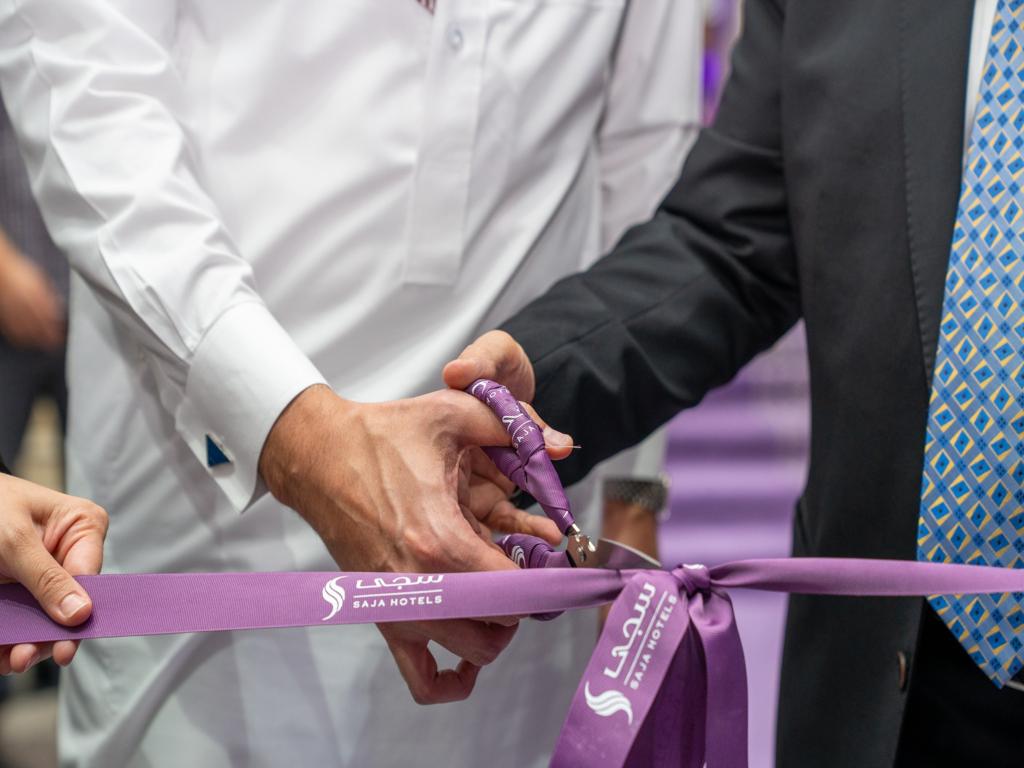أعلنت شركة الطاقة الكهربائية اليابانية كيوشو عن إطلاق وحدة الطاقة رقم 1 في مصنع الطاقة النووية سنداي. ومن المزمع أن تبدأ وحدة الطاقة في توليد الكهرباء يوم الجمعة الموافق 14 أغسطس. كما سيتم تشغيل وحدة الطاقة الثانية في المصنع اعتبارًا من منتصف شهر أكتوبر.
كانت وحدتا الطاقة النووية في مصنع الطاقة النووية في سنداي هي الأولى في اليابان التي حصلت على موافقة إعادة التشغيل من مكتب القوانين النووية وفقًا للمتطلبات الأمنية الجديدة المفروضة بعد الحادثة التي وقعت في عام 2011 في مصنع فوكوشيما 1؛ حيث أغلقت آخر وحدة طاقة في البلاد في سبتمبر 2013. ولكن حاليًا مُنحت وحدة الطاقة الثالثة في مصنع الطاقة النووية في إيكاتا (ولاية إيهيم) بالإضافة إلى وحدتي الطاقة في مصنع الطاقة النووية في تاكاهاما (ولاية فوكوي) التصريح بإعادة التشغيل، ولكن لم يتم الإبلاغ حتى الآن عن موعد بدء تشغيلهم. وبصفة عامة، تعتزم السلطات اليابانية إعادة تشغيل 25 مفاعلاً نوويًا. ولكن يجب على المشغلين التقييد والالتزام بقوانين أكثر صرامة مفروضة من قبل الجهات المنظمة للطاقة الذرية. وكما نقلت إذاعة راديو بي بي سي، أنفقت الشركة المشغلة لمصنع الطاقة النووية سنداي 120 مليون دولار أمريكي لضمان سلامة نظام الأمن والسلامة الجديد.
ومن ثم، ولأول مرة منذ وقوع حادثة ربيع 2011 في مصنع الطاقة النووية في فوكوشيما 1، يعيد مشغلو مصانع الطاقة النووية اليابانية تشغيل وحدات الطاقة في مصنع الطاقة النووية في سنداي على جزيرة كيوشو.
ومن الجدير بالذكر أن قرار بداية تشغيل المفاعل قد تم اتخاذه بعدما رفضت محاكمة مقاطعة كاجوشيما طلب المواطنين عدم تشغيل مفاعلي مصنع الطاقة النووية في سنداي تحت إشراف شركة كيوشو للطاقة الكهربائية بسبب الخوف على أمنهم وسلامتهم.
ووفقًا لقرار المحكمة، سيتم إطلاق المفاعلين الأول والثاني بعد إغلاقهما مع باقي وحدات الطاقة على مستوى البلاد للتأكد من سلامتها بعد حادثة فوكوشيما والتي تسببت في وقوع زلزال وتسونامي ربيع 2011.
يعتقد يوري بروكودين، خبير في إف إكس بازووكا “إن إعادة تشغيل البرنامج النووي بعد أحداث فوكوشيما يعتبر أمرًا في غاية التعقيد والدقة في اليابان. فمن ناحية، لا يمكن تقبل الطاقة النووية السلمية نفسيًا بشكل سريع بسبب المخاوف العامة بعد الحادثة. ولكن من وجهة نظر اقتصادية، كانت إعادة تشغيل مصنع الطاقة النووية مجرد مسألة وقت، وذلك لأن انخفاض ميزان التجارة بسبب الحاجة إلى شراء منتجات ضرورية باهظة الثمن كان سيفرض هذا الأمر عاجلاً أو آجلاً على أية حال. فإن الاعتماد بشكل كبير على الواردات، والتي تصل الآن إلى 84 %، لا تقلل من كفاءة المنطقة بأسرها فحسب، ولكنها أيضًا وإلى حد كبير تحد من الإنتاج الصناعي والذي يرتفع استهلاكه من الطاقة. وسيبدأ إعادة تشغيل النظام بأكمله بمفاعل مصنع الطاقة النووية في سنداي على جزيرة كيوشو. ولقد تم اختيار مفاعلات مصنع الطاقة النووية سنداي ليعاد تشغيلها من بين 43 مفاعلاً من الممكن إعادة تشغيلها. وعلى الرغم من السلوك العام السلبي ضد البرنامج النووي، سيتعين على اليابان اتخاذ خيار لصالح اقتصادها. ومن ثم، فإن أول مفاعل للطاقة النووية في مصنع الطاقة النووية في سنداي لا ينطوي على معنى نفسي فحسب، ولكن له معنى دلالي أيضًا، فإذا سارت الأمور على ما يرام، سيُعطى الضوء الأخضر لإعادة تشغيل 42 مفاعلاً آخرين. ومن الجدير بالذكر أن إعادة تشغيل المفاعلات تتزامن مع ذكرى تفجيرات هيروشيما ونجازاكي، فعلى الأغلب تحاول قيادة البلاد حاليًا أن تؤكد أن الطاقة النووية تمتلك قيمة مختلفة تمامًا وأنها تهدف للبناء لا التدمير. ويجب أن يؤدي استعادة نظام الطاقة النووية إلى زيادة توليد الكهرباء في البلاد. فقبل وقوع الحادثة، غطى الإنتاج الكبير للطاقة النووية 30 % من إجمالي توليد الكهرباء. وحاليًا، ستختلف طاقة الإنتاج القصوى من 22 إلى 25 %، وهو ما يمكن تسميته بالنمو العالمي مقارنة بما تقرر اليابان تشغيله حاليًا.”
ومن جانبه، قال ديميتري بارانوف، كبير خبراء شركة Finam للإدارة “لقد كان القرار متوقعًا. فمن الطبيعي أن تحتاج اليابان في الموسم الصيفي إلى زيادة حجم توليد الكهرباء مع ارتفاع حرارة الجو وزيادة الرطوبة ولجوء معظم سكان البلاد إلى استخدام مكيفات الهواء. ففي الفترة الأخيرة، كانت مصانع الطاقة النووية تغطي الاحتياجات المتزايدة للكهرباء في أعقاب حوادث فوكوشيما وما تبعها من إغلاق كافة مصانع الطاقة النووية، وترتب عى ذلك نقص الطاقة الكهربائية وخصوصًا أثناء فصل الصيف عندما تزيد معدلات الطلب والاستهلاك. وبشكل واضح، يعاني الاقتصاد القومي من نقص الكهرباء، وبالتالي تتضح أسباب قرار تشغيل مصنع الطاقة النووية. وعلى الرغم من أن تشغيل وحدة طاقة واحدة لن يكون له تأثير كبير على مشكلة نقص الطاقة في البلاد، ولكن عملية إعادة تشغيل مصنع الطاقة النووية بعد طول توقف سيكون له تأثير هائل على الصناعة وعلى الاقتصاد ككل وعلى المزاج العام للمواطنين. فلا يخفى على أحد أن مصانع الطاقة النووية أُوقفت بسبب تأثيرها على الناس، وخوفهم من حادثة فوكوشيما. وكانت عملية التوعية سريعة للغاية ولكن تأخرت عملية إعادة التشغيل؛ والآن فقط قررت اليابان أن تعود للانضمام للدول التي تستخدم الطاقة النووية. وقد أثر عاملان على اتخاذ هذا القرار. أولاً: مر هذا المصنع بالعديد من الفحوص من قبل الهيئات القومية وعلى مستوى الوكالة الدولية للطاقة الذرية وثبت سلامته وقدرته على العمل بكامل طاقته. وثانيًا: يعتبر هذا القطاع قطاعًا تشغيليًا أساسيًا من الاقتصاد ولا يمكن حتى لدولة غنية مثل اليابان أن تتحمل خسارته؛ حيث خسر الكثير من الموظفين وظائفهم، بالإضافة إلى خسارة إيرادات وميزانيات الشركات المشغلة لمصانع الطاقة النووية. ومن ثم، كان من الطبيعي اتخاذ قرار إعادة تشغيل مصنع الطاقة النووية في سنداي. ولأن عددًا من وحدات الطاقة النووية في اليابان قد تم فحصها واختبارها، يمكننا أن نتوقع أيضًا أن يتم تشغيلها قريبًا. ومن المحتمل أن تبدأ بعض وحدات الطاقة حتى نهاية هذا العام في توفير الكهرباء لشبكة توزيع الكهرباء اليابانية. ومن الجدير بالذكر أن إعادة تشغيل المفاعلات النووية سيسمح لشركة روساتوم بإحياء علاقاتها المقطوعة سابقًا باليابان، وذلك للبدء في توريد اليوارنيوم المخصب لمصانع الطاقة النووية اليابانية.”

Japanese Kyushu Electric Power Company Inc publicly announced the launch of power unit No.1 at Sendai NPP. The power unit has started generating electricity on Friday, August 14, and the second power unit at the plant will be put into operation in mid-October
Both power nuclear units at Sendai NPP were first in Japan to receive the approval of the Office of Nuclear Regulation in accordance with the new security requirements imposed after the accident in 2011 at the plant “Fukushima-1”. The last power unit in the country was shut down in September 2013. As for now, the permission to restart operation is given to the third power unit at the Ikata NPP (Ehime Prefecture) and two power units at Takahama NPP (Fukui Prefecture), but the timing of the launch of their work is not reported so far. Generally, Japanese authorities intend to restart 25 nuclear reactors. However, operators will need to adhere to much stronger rules imposed by the national atomic regulator. As the BBC reported, the Sendai NPP’s operator company spent $120 million for assuring the new safety systemThus, first since 2011’ spring accident at Fukushima-1 NPP, Japanese nuclear operators restart the operation of the power units at Sendai NPP on the Kyushu island
It is noteworthy that reactor’s start-up launched after the District Court of the Japanese prefecture of Kagoshima rejected the locals’ appeal not to restart the operation of the two reactors at Sendai NPP operated by the Kyushu Electric Power Co. due to fears for their unsafety
According to the court decision, Sendai NPP reactors 1 and 2 will be launched after their shutdown along with rest of the power units nationwide to check safety after Fukushima accident caused by earthquake and tsunami in spring 2011
Yuri Prokudin, FX BAZOOKA expert, believes that “the restart of its nuclear program after Fukushima events would be a very complicated and delicate matter in Japan. On one hand, peaceful nuclear power could not be psychologically accepted quickly due to public fears after the accident. However, from an economic point of view, NPP re-launch was only a matter of time: decline of trade balance caused by need to procure high-priced utility products would return to this point sooner or later anyway. The high level of dependence on imports, which currently reaches 84 per cents, not only reduces the efficiency of the whole region, but also to a large extent limited industrial production, which has a high power consumption. Restart of the whole system begins with the Sendai NPP reactor located on Kyushu island. Sendai NPP reactors were chosen to restart among 43 reactors as potentially capable to re-launch operation. Despite negative public attitude against nuclear program, Japan still will have to make a choice in favor of its own economy. Therefore, the launch of the Sendai NPP first nuclear power reactor has not only psychological, but also a symbolic meaning: if all goes well, the launch of the remaining 42 reactors will also receive a green light. Noteworthy that the reactor’s restart takes place in the days of the memory of atomic bombing victims in Hiroshima and Nagasaki: most likely, country’s leadership is trying to show that nuclear energy currently has a completely different value and is intended to help, not destroy. The recovery of nuclear power system should ultimately lead to higher electricity generation in the country. Thus, before accident, NPPs power output covered 30 per cents of total electricity generation. Currently, maximum potential capacity will vary within 22 to 25 percent. However, it can be called as global growth against what japan disposes we have in Japan at the moment”
Dmitry Baranov, Finam Management Ltd. chief expert said: “The decision was expected. Traditionally, the summer season in Japan’s electricity needs increase, as hot and humid weather makes almost the entire population of the country to use air conditioning. If recently, grew up electricity needs were covered by nuclear power plants, after Fukushima events and subsequent shutdown of all NPP, the country faced power shortages, especially in summer when the demand for it increases. Obviously, national economy suffers from a lack of electricity, so it is clear why it was decided to run the plant. Although the launch of only one power unit is unlikely to have a major impact on the problem of energy shortage in the country, the fact of NPP operation restart after a long break can have a huge impact on industry and the entire economy and the mood of public members. No secret that the Japanese nuclear power plants were stopped largely because of the influence of the public, which was frightened by the Fukushima accident. Enlightenment came pretty quickly, but the way back was delayed, and only now Japan returned joined the countries that use nuclear power. Two factors affected on this decision-making. First, this power plant passed numerous inspections by national regulators and at IAEA level and, thus, it is proven safety, capable to operate at full power. Secondly, an operational sector of the economy – it is a luxury that cannot afford even such a rich country as Japan, because many employees have lost their jobs, and the budget as well lost revenue from nuclear generating companies. It’s not surprising that decision was taken to restart an operation at Sendai NPP. Because a number of Japanese nuclear power plants have been inspected or underwent examinations, we can expect that these power plants will be also launched after a pause. It is possible that a few power units until the end of the year may begin to supply electricity to Japanese electricity grid. It is worth to note that the restart of nuclear reactors will allow Rosatom to renew relationships broken earlier to supply low-enriched uranium for Japanese nuclear power plants”


 أسواق4 سنوات ago
أسواق4 سنوات ago
 عقارات4 سنوات ago
عقارات4 سنوات ago
 سيارات4 سنوات ago
سيارات4 سنوات ago
 فن4 سنوات ago
فن4 سنوات ago
 مطاعم4 سنوات ago
مطاعم4 سنوات ago
 منوعاتسنة واحدة ago
منوعاتسنة واحدة ago
 عطوراتسنتين ago
عطوراتسنتين ago
 عطورات3 سنوات ago
عطورات3 سنوات ago




